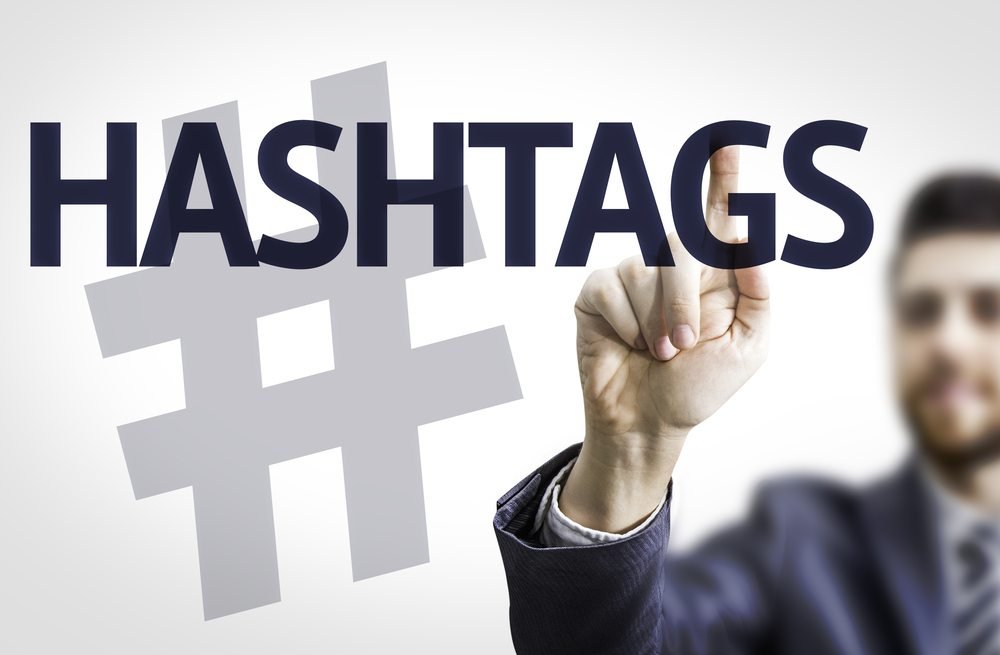Table of Contents
How To Use Hashtags
Using hashtags effectively on social media can significantly enhance your content’s visibility, engagement, and reach. Business Onboarding guide, we’ll explore the importance of hashtags, best practices for hashtag usage across various platforms, strategies for hashtag research, and tips for maximizing their impact.
Hashtags are words or phrases preceded by the “#” symbol used to categorize content on social media platforms. They serve as clickable links, allowing users to discover posts related to specific topics or themes. Originally popularized on Twitter, hashtags are now ubiquitous across platforms like Instagram, Facebook, LinkedIn, and TikTok.
Importance of Hashtags
Hashtags have become an integral part of social media culture and marketing strategies due to their ability to enhance discover ability, increase engagement, and foster community interactions. In this section, we’ll delve into the importance of hashtags in 500 words.
Enhancing Discover ability: One of the primary functions of hashtags is to make content more discover able to users interested in specific topics or themes. By categorizing posts under relevant hashtags, content creators increase the likelihood of their posts being seen by a broader audience beyond their immediate followers. For example, a food blogger who includes hashtags like #foodie or #recipes in their posts allows users interested in food-related content to find and engage with their posts, even if they don’t follow the blogger’s account.
Increasing Engagement: Hashtags play a crucial role in driving engagement on social media platforms by encouraging users to participate in conversations, share content, and interact with others. When users come across posts with hashtags that resonate with them, they are more likely to like, comment, or share the content, thereby increasing engagement metrics such as likes, comments, and shares. Moreover, hashtags facilitate the formation of communities around specific topics or interests, where users can connect with like-minded individuals and engage in meaningful discussions.

Fostering Community Interactions: Hashtags serve as virtual meeting points where users with similar interests converge to share content, exchange ideas, and engage in conversations. Communities built around hashtags create a sense of belonging and camaraderie among participants, leading to deeper connections and stronger relationships. For example, hashtags like #travelphotography or #fitnessmotivation bring together enthusiasts passionate about travel or fitness, respectively, fostering a supportive and collaborative environment where users can inspire and motivate each other.
Amplifying Brand Visibility: For businesses and brands, hashtags are instrumental in amplifying their visibility, building brand awareness, and driving marketing campaigns. Branded hashtags, in particular, allow companies to establish a unique identity, promote their products or services, and engage with their audience in a cohesive manner. By encouraging users to incorporate branded hashtags in their posts or user-generated content, brands can leverage the power of user-generated marketing and harness the collective influence of their followers to extend their reach and enhance brand recognition.
Best Practices for Hashtag Usage
Hashtags have become an integral part of social media communication, serving as powerful tools for increasing visibility, engagement, and reach. However, to leverage hashtags effectively, it’s essential to follow best practices. Here are some key guidelines for optimal hashtag usage:
- Relevance: Ensure that the hashtags you use are directly related to the content of your post. Irrelevant or misleading hashtags can annoy users and damage your credibility. Focus on hashtags that accurately represent the theme, topic, or message of your post.
- Specificity: Balance the use of popular, broad hashtags with more niche or specific ones. While popular hashtags can increase your content’s visibility, they also attract a vast and diverse audience. Incorporating niche hashtags allows you to target a more specific audience interested in your content.

- Research: Conduct thorough hashtag research to identify trending, relevant, and popular hashtags within your niche or industry. Utilize hashtag analytics tools and explore trending topics on social media platforms to discover hashtags that align with your content and target audience.
- Consistency: Establish consistency in your hashtag usage by using the same set of hashtags across related posts. Consistent hashtag usage helps reinforce your brand identity and makes it easier for followers to find and engage with your content.
- Limitation: While some social media platforms allow for a large number of hashtags per post, it’s important to exercise restraint. Overloading your posts with hashtags can appear spammy and detract from the quality of your content. Instead, aim to use a moderate number of relevant hashtags that enhance your post’s discoverability without overwhelming your audience.
Hashtag Usage Across Platforms
Hashtags have become integral across various social media platforms, each with its own unique dynamics and best practices for hashtag usage. Here’s a breakdown of how hashtags are utilized across some of the most popular platforms:
Instagram:
Instagram is perhaps the most hashtag-centric platform, where hashtags play a crucial role in content discovery and engagement. Users can include up to 30 hashtags per post, although best practices typically recommend using between 5 to 10 hashtags for optimal visibility.
Hashtags on Instagram serve several purposes:
- Discoverability: Users can search for or follow hashtags, allowing them to explore content related to specific topics or interests. Using relevant hashtags increases the likelihood of your posts being discovered by users interested in those topics.
- Categorization: Hashtags help categorize content, making it easier for users to find posts related to specific themes or industries. This categorization facilitates engagement within niche communities and allows users to curate their feeds based on their interests.
- Trending Topics: Instagram highlights trending hashtags in the Explore tab, providing users with an opportunity to join popular conversations and increase their visibility.
Twitter:
Twitter is where hashtags first gained prominence as a tool for organizing conversations and making content more discoverable. Tweets are limited to 280 characters, so brevity is essential when using hashtags on this platform.
Here’s how hashtags are used on Twitter:
- Conversation Organization: Hashtags are used to organize tweets around specific topics or events, enabling users to follow and participate in ongoing conversations.
- Trending Topics: Twitter prominently displays trending hashtags and topics, allowing users to stay informed about current events and join relevant discussions.
- Hashtag Chats: Twitter users often participate in hashtag chats or Twitter chats, which are organized discussions around a specific hashtag at a designated time. These chats foster engagement and community building among participants.

Facebook:
While hashtags are less prevalent on Facebook compared to Instagram and Twitter, they can still enhance the discoverability of public posts and facilitate engagement within niche communities.
Here’s how hashtags are used on Facebook:
- Discoverability: Users can search for or click on hashtags to discover public posts related to specific topics or interests. Including relevant hashtags in your posts increases the likelihood of them being discovered by users interested in those topics.
- Branding: Similar to Instagram, brands may create and promote branded hashtags on Facebook as part of their marketing campaigns to increase brand visibility and encourage user engagement.
- Trending Topics: Facebook occasionally highlights trending hashtags in the News Feed, allowing users to explore popular topics and join relevant conversations.
LinkedIn:
LinkedIn has increasingly embraced the use of hashtags to categorize content and make it more discoverable to professionals within specific industries or interest groups.
Here’s how hashtags are used on LinkedIn:
- Professional Networking: Hashtags on LinkedIn help professionals discover relevant content within their industry or field of interest, facilitating networking and knowledge sharing.
- Content Categorization: Including relevant hashtags in posts helps categorize content and make it more searchable, increasing its visibility among LinkedIn users interested in those topics.
- Thought Leadership: Thought leaders and industry experts often use hashtags strategically to position themselves as authorities within their niche and attract engagement from their target audience.
Strategies for Hashtag Research
Effective hashtag research is essential for maximizing the impact of your social media content. By identifying trending and relevant hashtags, you can improve your content’s discoverability, increase engagement, and reach a broader audience. Here are strategies for conducting hashtag research:
- Keyword Research: Start by identifying keywords and phrases relevant to your content, industry, or target audience. Use keyword research tools like Google Keyword Planner, SEMrush, or Ubersuggest to generate a list of potential hashtags. Focus on terms that reflect popular topics, trends, or keywords associated with your niche.
- Competitor Analysis: Analyze the hashtags used by your competitors and industry influencers to gain insights into trending or niche hashtags within your industry. Tools like Social Blade or Sprout Social can help you track competitors’ social media activity and identify the hashtags they frequently use. Pay attention to the hashtags generating high engagement and incorporate them into your own strategy.
- Platform Insights: Utilize built-in analytics tools provided by social media platforms to identify trending hashtags and understand your audience’s preferences. Platforms like Instagram, Twitter, and TikTok offer insights into trending topics and popular hashtags. Analyze these insights to discover relevant hashtags and incorporate them into your content strategy.
- Trending Topics: Monitor trending topics and hashtags on platforms like Twitter, Instagram, and TikTok to capitalize on timely opportunities. Keep an eye on trending news, events, holidays, and cultural moments that align with your brand or content. Incorporate trending hashtags into your posts to increase visibility and engagement during peak moments.

Tips for Maximizing Hashtag Impact
Maximizing the impact of hashtags on social media requires a strategic approach that goes beyond simply adding popular tags to your posts. Here are some tips to help you leverage hashtags effectively and increase their impact:
- Research Relevant Hashtags: Conduct thorough research to identify hashtags that are relevant to your content, target audience, and industry. Use keyword research tools, explore trending topics, and analyze the hashtags used by competitors and industry influencers. By choosing hashtags that align with your content, you’ll attract users who are genuinely interested in what you have to offer.
- Use a Mix of Popular and Niche Hashtags: Strike a balance between using popular hashtags with high search volumes and niche hashtags with a more targeted audience. While popular hashtags can help increase visibility, niche hashtags allow you to reach a more engaged and specific audience. Experiment with different combinations to find the right balance for your content.
- Create Branded Hashtags: Develop unique hashtags specific to your brand or marketing campaigns. Branded hashtags not only help increase brand visibility but also encourage user-generated content and foster community engagement. Promote your branded hashtags across various marketing channels to encourage followers to use them when sharing content related to your brand.
- Tailor Hashtags to Each Platform: Different social media platforms have their own hashtag conventions and best practices. Tailor your hashtag strategy to each platform by understanding how users engage with hashtags on that platform. For example, Instagram allows for more hashtags per post compared to Twitter, so take advantage of this by including a mix of broad and specific hashtags in your Instagram posts.
Conclusion
Mastering the art of using hashtags effectively on social media can significantly enhance your online presence and engagement. By incorporating relevant, specific, and trending hashtags into your posts, you can increase visibility, reach a broader audience, and amplify your message. Additionally, understanding the platform-specific nuances and utilizing tools like analytics can help refine your hashtag strategy over time. Remember, moderation is key; don’t overload your posts with hashtags, but rather focus on quality over quantity. By staying consistent, monitoring performance, and adapting to changes in trends and algorithms, you can leverage hashtags as powerful tools to connect with your audience, spark conversations, and grow your brand on social media platforms.



Leave a Reply